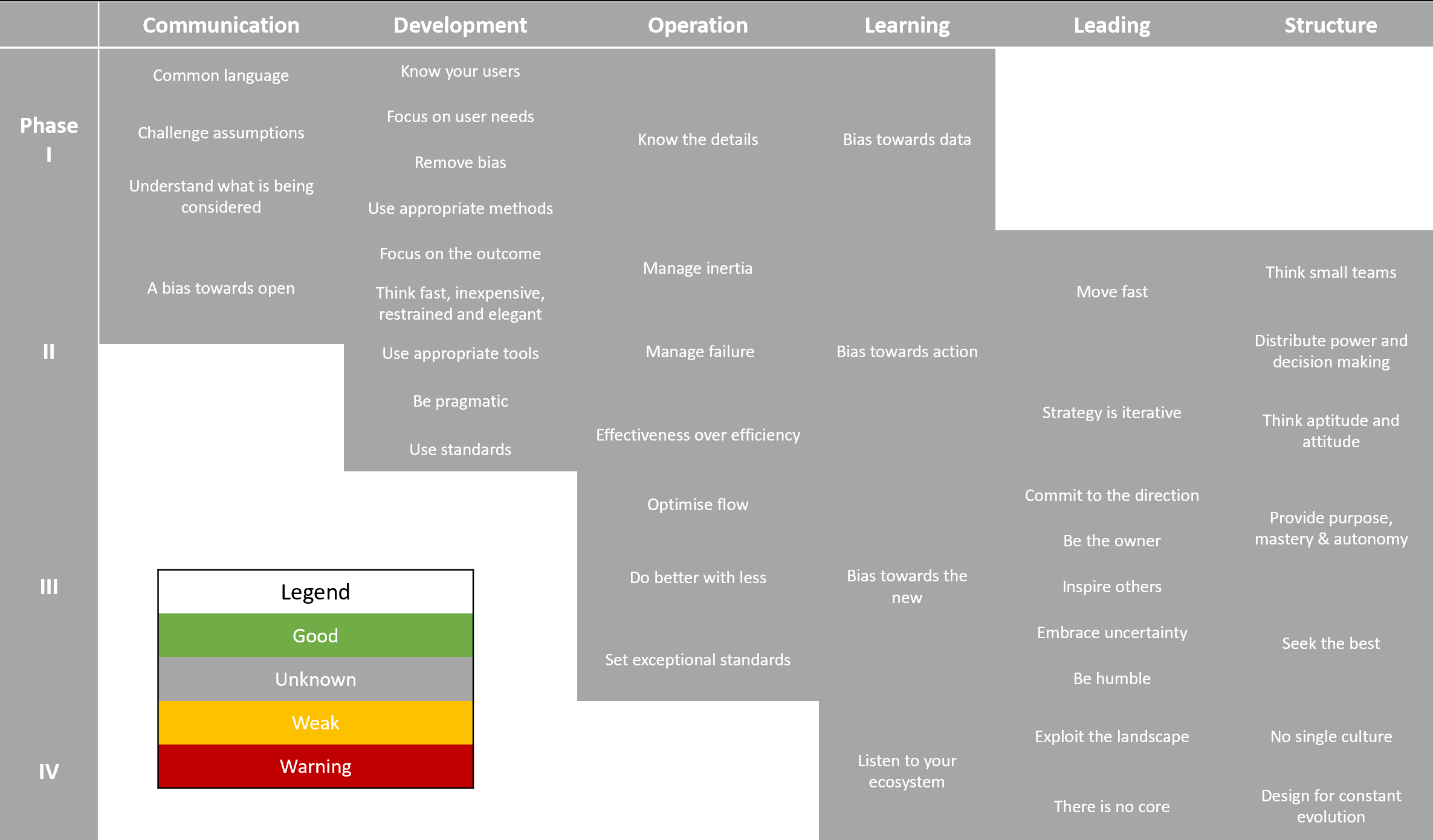Ask the right questions to get your data insights projects back on track

There are lots of "assessements" available on the web. Most of them are pure marketing nonsense - half a dozen questions which claim, horoscope-like, to divine deep insights into your organization or team psyche.
We've tried to do something a little different with our Power BI Maturity assessment.
The questions are intended to guide you to a new way of thinking about your organization - both in terms of what you are considering and whose perspectives you consider when trying to understand the way you work.
Of course, in a high-level assessment like this, you aren't lasering in on specific details and targeted activities, processes, or organizational changes.
Instead we are trying to get a picture of what you might think of as the "baseline" activities you should always be doing.
These baseline activities are really quite fundamental to any business:
- Understand who is involved
- Understand how they can derive value from the work you do
- Understand how people communicate with each other, and what language they share
We find that understanding is derived from asking good questions, and that is what our assessment is all about. So let's dive into that a bit more deeply, starting with "who is involved?"
Understand who is involved
One of the most common untested assumptions in any organization is that we all know who we are actually serving with our work. You'll be surprised by how often teams don't know who their downstream users are - especially when they are one step removed from the team themselves.
Useful questions to throw into the mix include:
- "Who are we hoping will benefit from our work?"
- "Who will actually benefit, directly and indirectly?"
- "Who might be adversely impacted?"
- "Who are we forgetting to consider?"
Notice that we aren't trying to figure out how people will benefit, just who we think is involved.
Understand how they can derive value from the activity
Once we've got at least one person (or class of people) that we think we are involved, we can start to figure out how they specifically will benefit.
Questions to illuminate this might be along the lines of:
- "What do our users get out of this?"
- "What would our users say that they want to get out of it?"
- "What do our users really need?"
- "Why did they ask us to do this?"
- "Are there other activities which connect to this one?"
The last couple of questions are really important. They can often unlock the real need, and how one piece of work fits in to an overall strategy.
Understand how they communicate with each other, and what language they share
Once we've started to describe "who" and "how they benefit" we can start to figure out if we are actually communicating this in ways that everyone understands.
When we talk to users, we need to ask lots of questions like:
- "When you say ..., what do you mean by ...?"
- "She talked about X, and they talked about X. But X seems to be something different in each case."
You can't let assumptions about language go unchallenged - because that's where miscommunications occur.
Our favourite story to illustrate this is about client who had more than a dozen subtly different definitions of "Gross Profit" - but everyone thought they were talking about the same thing.
Because people couldn't understand why their numbers didn't match on this "simple" measure, no one trusted any of the data.
This was a huge cultural problem caused by a failure to establish a common understanding of a core business concept.
Wardley Doctrine
Some readers may have a vague inkling that they've seen this story before. In fact, you probably have. This is an example of applying Wardley Doctrine to your business.
The Doctrine is a part of Wardley Mapping - a technique we have often talked about before.
Wardley Mapping essentially defines Doctrine as "the things we should always be doing".
The extent to which an organization is practicing good doctrine (in the Wardley sense) is a measure of "maturity": the organization's readiness to respond to the challenges that it faces.
Organizing principles
Based on his research, and considerable practical experience, Simon Wardley organized his Doctrine as a table of principles, under several broad categories:
- Communication
- Development
- Operation
- Learning
- Leading
- Structure
Under each of these categories are the "principles" that should be followed when the organization does any work.
Those principles are further organized into Phases - I, II, III and IV. These are basically the "walk before you try to run" guard-rails. You should be nailing Phase I before you try to improve on things in Phase II.
You can see the table in the diagram below.

You can also download a PowerPoint template for your own use here.
How does Wardley Doctrine apply here?
Let's take a closer look at the table.
Right at the top of Phase I in the Development category are
- Know your users and
- Focus on user needs
These map directly to our sections
- Understand who is involved and
- Understand how they can derive value from the activity
Look across from those, and you will see Common Language as the first item in the Communication category.
This underpins our Understand how they communicate with each other, and what language they share.
You will also see that the next item in that Communication category is Challenge Assumptions.
This principle is really important. Remember in our section on shared language, we said:
"You can't let assumptions about language go unchallenged - because that's where miscommunications occur."
That's a great example of framing the questions we ask in ways that create opportunities to challenge assumptions. We are also careful to ask our questions in ways that are challenging, but avoid unnecessary confrontation.
It's also a good idea to ask questions that are mostly about your experience - not how you imagine things are "in general"; if you get enough answers you can generalize, but it is better to do that from "fact" than speculation.
Endjin's Power BI scorecard
So, the questions in our Power BI maturity scorecard guide you towards the kinds of things you should be asking yourself to determine how well you are applying the principles in the Doctrine to your data-driven organizational change.
In our basic survey, we ask questions that probe most of the principles in Phase I and Phase II of the Doctrine, and this helps us to get a first "Good/Weak/Warning" assessment of the organization in these areas.
But, more importantly, they give you a pattern to start to try to improve those basic "match fitness" practices by asking the right kinds of questions in your day-to-day work.
As these principles become a part of your organizational culture, you will be better able to serve your users' needs, and better able to adapt to the challenges of the changing landscape of your business.
Fill in the scorecard for your organization today, and, as you answer the questions, see if you can figure out how they might reflect on the way Wardley Doctrine can be applied in your team, and where you might have opportunities to improve.
But this isn't a magic mirror - it's just a way to get started. Keep asking questions! And encourage others to ask them too.
We'd love to hear how you get on - and we're always available if you need some help.




